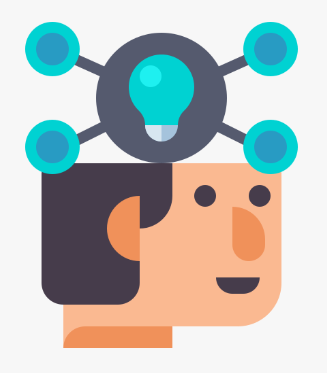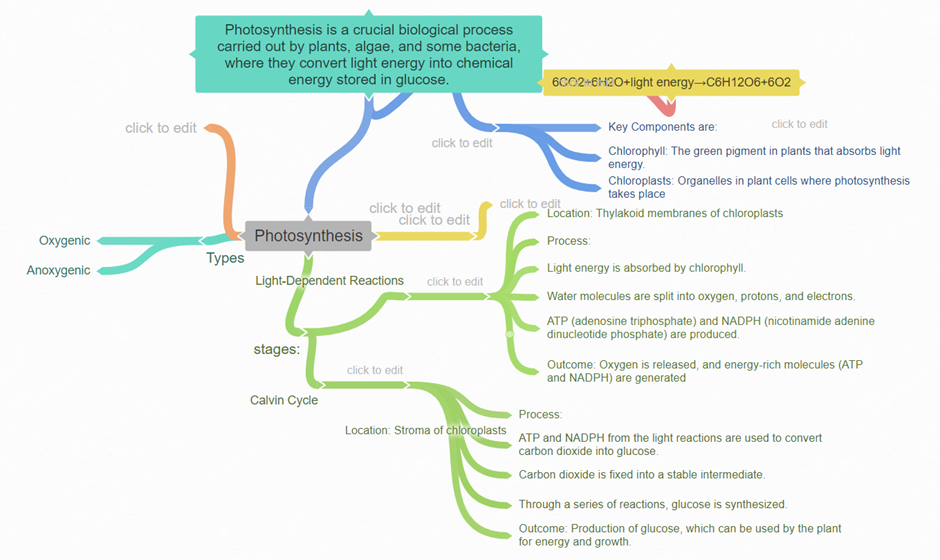
4
OctoberThe Power of Visualization: Using Mind Maps to Boost Your Learning
Are you looking for a way to make studying more exciting and effective? Mind maps might be the perfect tool for you! They’re a fantastic way to visualize and organize information, making it easier to understand and remember. Let’s dive into what mind maps are, how they work, and how you can use them to boost your learning.
What is a Mind Map?
A mind map is a visual tool that helps you organize ideas and information. Think of it as a diagram that starts with a central concept in the middle and branches out into related topics, much like the branches of a tree. Each branch represents a subtopic, creating a visual representation of how different pieces of information connect to the central idea.
Mind maps can be used for various subjects, whether you’re studying literature, science, or history. They transform the way you engage with information, allowing you to see connections that might be difficult to grasp with traditional linear notes.
Why Use Mind Maps?
Mind maps are incredibly useful for several reasons:
Visual Learning: They convert text into images, making information easier to understand and remember. Our brains are naturally inclined to remember visuals better than words, so mind maps leverage this trait.
Clear Organization: Mind maps help you see how different ideas relate to one another, allowing you to better understand the big picture. Instead of feeling overwhelmed by a large amount of information, you can break it down into manageable pieces.
Creative Thinking: Mind maps promote brainstorming and encourage free-form exploration of ideas. They allow you to think outside the box and make connections you might not have considered otherwise.
How to Create a Mind Map
Creating a mind map is easy and enjoyable! Here’s a simple guide to help you get started:
1. Start with a Central Idea
Begin by writing or drawing the main topic in the center of your page or screen. This will be the focus of your mind map.
Example: If you’re studying “The Solar System,” write “The Solar System” in the center.
2. Add Main Branches
Next, think of the major subtopics related to your central idea and draw branches radiating from the center. Label each branch with these main ideas.
Example: For “The Solar System,” your branches might include “Planets,” “Moons,” “Asteroids,” and “Sun.”
3. Include Details
Add smaller branches to each main branch with additional details. This helps break the information down into more specific parts.
Example: Under “Planets,” you can add branches for “Earth,” “Mars,” and “Jupiter.”
4. Use Colors and Images
Make your mind map more engaging by incorporating different colors and adding simple drawings or symbols. This can help make the information stand out and be more memorable.
Example: Use blue for “Water” and green for “Land” when mapping out features of different planets.
5. Review and Update
Regularly look over your mind map to ensure it includes all important details and makes sense. Feel free to add or adjust as you learn more.
Example: If you learn about “Saturn’s rings,” add it to your map under “Saturn.”
Practical Uses of Mind Maps
Mind maps can be utilized in numerous ways, both for school and personal projects:
1. Studying for Tests
Create a mind map to review and memorize important concepts for an upcoming test. It organizes information in a way that’s easy to review.
Example: For a history test on “Ancient Civilizations,” make a mind map with branches for “Egypt,” “Mesopotamia,” and “India.” This helps you visualize and categorize information, making it easier to recall during exams.
2. Planning Projects
Use mind maps to plan and organize your ideas before starting a school project or assignment.
Example: If you’re working on a science project about “Photosynthesis,” your mind map could include branches for “Sunlight,” “Water,” “Chlorophyll,” and “Glucose.” This structured approach helps you outline your project comprehensively.
3. Brainstorming Ideas
Mind maps are excellent for brainstorming and exploring different ideas on a topic. They help you visualize connections and come up with creative solutions.
Example: When brainstorming for a creative writing assignment, use a mind map to explore different story ideas and characters. You can branch out from the main idea to subplots, character traits, and themes, helping you structure your writing.
Tools for Creating Mind Maps
You can create mind maps using various simple tools:
Paper and Pen: Draw your mind map by hand for a quick and easy option. This tactile method can help reinforce memory through physical engagement.
Online Tools: Utilize websites like Coggle or MindMeister to create digital mind maps that you can edit and share. Digital tools often offer templates and collaborative features, making it easy to work with classmates or friends.
Tips for Effective Mind Mapping
To maximize the effectiveness of your mind maps, consider these tips:
Keep It Simple: Avoid overloading your map with too much information. Focus on key points to prevent confusion.
Be Creative: Use colors, shapes, and images to make your map more engaging and easier to remember. The more visually appealing your map is, the more likely you are to engage with it.
Review Regularly: Regularly go over your mind map to reinforce your understanding and memory. This repetition solidifies your knowledge and prepares you for tests and assignments.
Benefits of Mind Mapping for Learning
Using mind maps has numerous benefits that can enhance your study habits and overall learning experience:
Improved Memory Retention: The visual format of mind maps makes it easier for the brain to store and recall information. By organizing your thoughts visually, you can create strong mental associations.
Enhanced Critical Thinking: Creating a mind map encourages you to think critically about how concepts relate to one another. This skill is invaluable for problem-solving in any subject.
Increased Engagement: The interactive nature of mind mapping keeps you engaged in the learning process. You’re more likely to retain information when you actively participate in creating and reviewing your study materials.
Final Thoughts
Mind mapping is a powerful and enjoyable way to organize your thoughts and understand complex topics. By turning information into a visual format, you can make studying more engaging and effective. Whether you’re preparing for a test, planning a project, or brainstorming ideas, mind maps provide a clear and structured way to approach learning.
Next time you’re working on a project or preparing for a test, give mind mapping a try—you might be surprised at how helpful it can be! It’s a versatile tool that can be adapted to fit any subject or learning style, making it a fantastic addition to your study toolkit.
Remember, the key to successful mind mapping is to start with a clear central idea, use visual elements to enhance understanding, and review regularly to reinforce your learning. Happy mapping!


Reviews